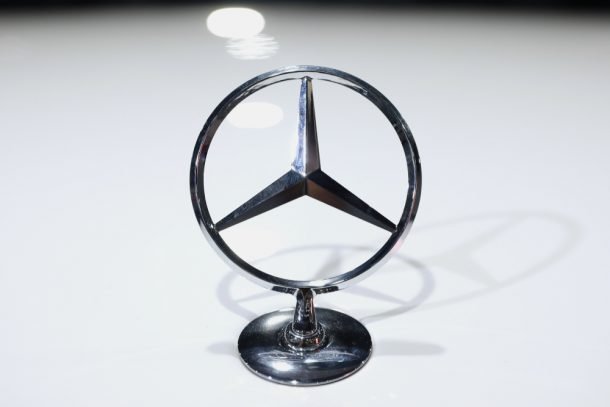Pixfly/Shutterstock
Daimler is getting cozy with Chrysler again, or at least the American side of Stellantis, so they can tackle battery development and production. Those in the know will recall that Chrysler has been passed around more than a bottle of booze at a middle school party. But its long history of partnerships also kept it in business and resulted in some of its better products.
Before the Amero-French merger that resulted in Stellantis, Fiat Chrysler Automobiles was an Italian-American company with facilities dotted around North America. Prior to that, it was known as DaimlerChrysler – resulting in the LX Platform, Pentastar V6, and a wider variety of Jeep Wranglers. Now, Chrysler’s alienated German wife has shown up on the doorstep with a wad of cash and news that she’ll be investing it into the new battery business.
Daimler has purchased a 33 percent stake of Automotive Cells Company (AAC), which was established and uncreatively named by Stellantis and TotalEnergies, in a bid to ensure Europe parent isn’t left behind in the electric revolution.
“Mercedes-Benz pursues a very ambitious transformation plan and this investment marks a strategic milestone on our path to CO2 neutrality. Together with ACC, we will develop and efficiently produce battery cells and modules in Europe – tailor-made to the specific Mercedes-Benz requirements,” Ola Källenius, CEO of Daimler AG and Mercedes-Benz AG, explained. “This new partnership allows us to secure supply, to take advantage of economies of scale, and to provide our customers with superior battery technology. On top of that we can help to ensure that Europe remains at the heart of the auto industry – even in an electric era: With Mercedes-Benz as a new partner, ACC aims to more than double capacity at its European sites to support Europe’s industrial competitiveness in the design and manufacturing of battery cells.”
From Daimler:
The entire ACC project will require an investment volume of more than seven billion euros – in a combination of equity, debt and subsidies – to reach a capacity of at least 120 Gigawatt hours in Europe by the end of the decade. Mercedes-Benz will invest a mid-three-digit-million euros amount next year. In total, the investments are expected to remain below one billion Euros. The transaction is subject to customary closing conditions, including agreement on definitive documentation and regulatory approvals.
The German automaker would like to scale up the development and production of next-generation battery cells and modules so it can keep its promise of being an all-electric company by 2030. However, it said it needs a total battery production capacity of more than 200 Gigawatt hours by that time, requiring it to build at least eight facilities and engage in numerous partnerships.
Following Daimler’s formal investment, the company will have an even 33 percent equity stake in ACC – giving it two of the six Supervisory Board seats and equal footing with Total and Stellantis. It’s expected that hardware will begin manifesting within the next couple of years and be shared among the three companies. For now, Daimler will be providing its “technical and production know-how” to help spur development. But more direct involvement is anticipated when the automaker finishes its Drive Systems Campus finishes construction in 2023, with additional European facilities to be considered later.
[Image: Pixfly/Shutterstock]
Become a TTAC insider. Get the latest news, features, TTAC takes, and everything else that gets to the truth about cars first by subscribing to our newsletter.
Related
For GREAT deals on a new or used Nissan check out Glendale Nissan TODAY!

